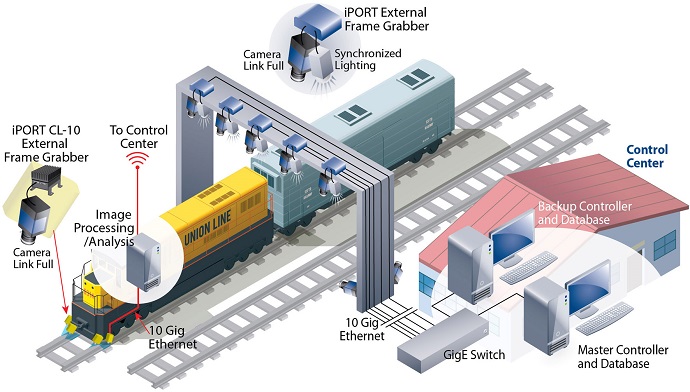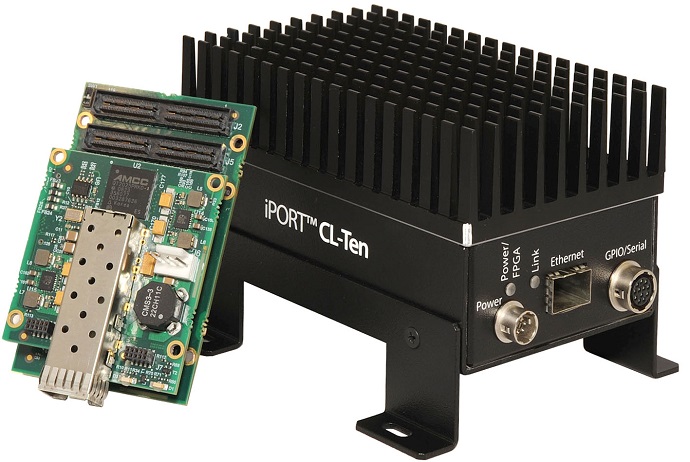03.04.2014
Camera Link Full cameras are typically deployed in railway inspection systems due to their high-bandwidth performance, but designers must compensate for the camera’s complex, limited reach cabling and lack of networking support by deploying costly extenders. Alternatively, Pleora’s iPORT CL-Ten Full* External Frame Grabber transforms Camera Link Full cameras into GigE Vision compliant cameras, enabling their integration into multipoint, real-time video networks using low-cost, long-distance Ethernet cabling and off-the-shelf switching.
The iPORT CL-Ten Full transmits uncompressed video at the maximum Camera Link Full rate of 6.12 Gb/s with consistent end-to-end latency directly to ports on a computer over industry standard 10 Gigabit Ethernet (GigE) fiber cable. With the long reach of 10 GigE - 1000s of meters versus 10 meters for Camera Link - processing and image analysis equipment can be located outside of harsh environments, in more convenient locations for maintenance, or in centralized operations centres.
In the diagram below, a series of Camera Link Full cameras along the track and in an overhead gantry capture images of key components on the moving train as part of an automatic wayside inspection system. The CL-Ten Full External Frame Grabber’s integrated programmable logic controller (PLC) synchronizes multiple position sensors, cameras, and lighting sources and triggers the image acquisition process.
Images from Camera Link Full cameras are converted at the source by the iPORT CL-Ten Full into GigE Vision-compliant video streams and transmitted to servers in a trackside enclosure for analysis.
With the extended reach of Ethernet, processing equipment can be located away from the track and in more convenient locations for maintenance. If a defect is detected, the system delivers a message along with images detailing the failure over long-reach 10 GigE cable to a centralized operations centre. Inspectors are alerted of any issues and can halt the train or, in the case of non-critical issues, schedule maintenance.

The iPORT CL-Ten External Frame Grabber converts Camera Link Full cameras into GigE Vision-compliant cameras that can be used in multipoint, real-time video networks using low-cost, long-distance Ethernet cabling.
In a mobile railway inspection system, Camera Link Full cameras are installed on railcars or service vehicles to detect damage to the rail and track components. With the iPORT CL-Ten Full, image feeds from Camera Link Full cameras are converted to a GigE Vision-compliant video stream, aggregated onto a single network, and transmitted to an on board workstation for analysis. If defects are identified, image data is overlaid with corresponding GPS information and transmitted wirelessly to an operations centre.
Pleora’s iPORT CL-Ten Full allows Camera Link Full cameras to be used in a flexible range of network configurations, from traditional umbilical connections to multipoint-to-multipoint switched video networks with many cameras, many workstations, and distributed image processing. In addition to railway monitoring systems, Pleora’s iPORT CL-Ten Full External Frame Grabber is ideal for vision systems for multi-lane free-flow tolling systems and factory automation applications.
*The iPORT CL-Ten Full (available May 2014) supports transmission of a single Full camera. The iPORT CL-Ten Dual Medium supports simultaneous transmission of 2 Medium or Base mode cameras.













